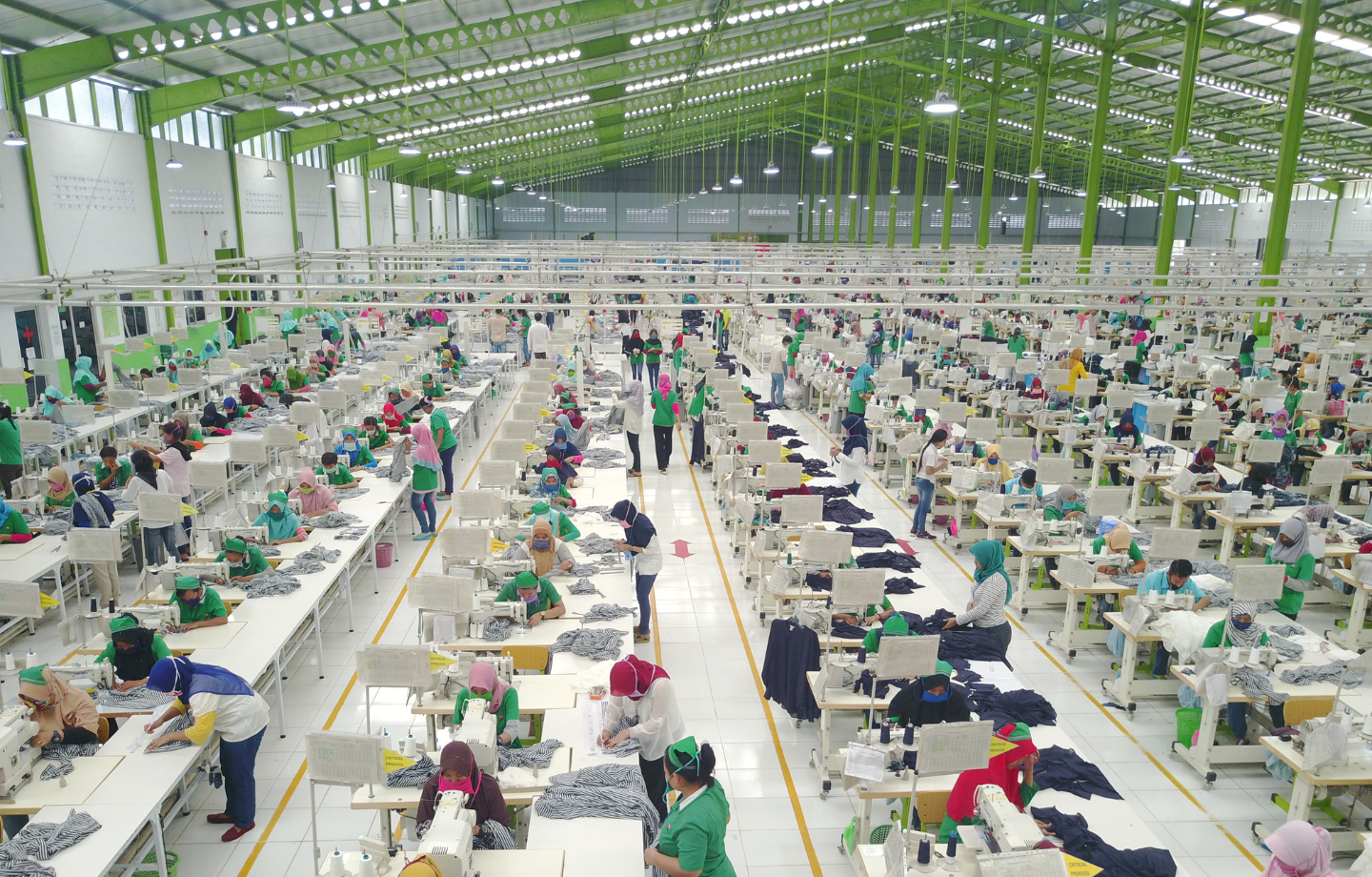Global Clothing Companies Need to Protect Workers as a Trade War Looms

April 25, 2025
President Donald Trump’s imposition of severe tariffs on key United States trading partners sent shockwaves through international markets. On top of a baseline 10% tariff on all imported goods, Trump targeted certain countries with even steeper levies, hitting global fashion supply chains especially hard. Top garment-producing nations like China (originally 34%), Vietnam (46%), Bangladesh (37%), and Cambodia (49%) were among those hit with the highest rates. For now, the 10% baseline tariff remains but President Trump has paused most of the increased tariffs for 90 days — except for China, whose rate was raised to 125% in response to its own 84% retaliatory tariff.
Despite the pause, the danger remains: The massive disruption of global trade set off by Trump’s tariffs poses a serious threat to the many millions of workers, mostly women, employed in garment factories across Asia. Tariff-driven factory closures and scaled-back operations are likely to trigger widespread layoffs, mass unemployment and economic turbulence in countries heavily reliant on garment exports. Losing factory jobs will leave garment workers without income, severance, or safety nets. Many of these workers may be forced into debt or informal, often exploitative, work.
The temporary reprieve from most of Trump’s tariffs gives brands a narrow window to act responsibly, devising both short- and long-term strategies in collaboration with suppliers. Yet some corporate buyers have already responded in ways that risk causing immediate harm to workers.
The US is one of the top markets for clothing and footwear, with 97% of clothing sold in the country being made overseas. In 2024, China accounted for 28.7% of all clothing and footwear sold in the US, followed by Vietnam at 25.4%. Together, Bangladesh, Indonesia, India, and Cambodia made up 25.8%.
As tariffs reshape global garment sourcing strategies, the long-term consequences for affected production countries could be severe. Companies are likely to turn to alternative sourcing countries with lower tariffs. If trade with high-tariff nations slows or halts entirely, factories in those regions may be forced to drastically scale back or shut down altogether. The Philippines, with a comparatively low original tariff rate of 17%, is emerging as an attractive alternative for brands sourcing in Asia. Meanwhile, Turkey, with a 10% original tariff and a well-developed textile industry, is well positioned to absorb US orders quickly. However, concerns remain that alternative production countries are not yet equipped to match China’s manufacturing scale. For example, after shifting some production from China to Sri Lanka, Vietnam, Myanmar, and India, Kelly Cook, CEO of David’s Bridal, one of North America’s largest wedding dress retailers, noted that these locations lack the infrastructure and scale of China, making it unlikely they can fully match its capacity.
Bringing manufacturing back to the US, the publicly stated goal of Trump’s tariffs, is largely unrealistic. Colin Browne, CEO of Cascale and former interim CEO of Under Armour, pointed out that the US lacks the raw materials, technology, specialized equipment and skilled and willing labor needed. According to data from the U.S. Bureau of Labor Statistics, employment in the US apparel manufacturing industry has declined by 90% between 1990 (902,740 employees) and March 2025 (84,100 employees). Even if a moderate domestic garment labor force could be established, any effort to on-shore garment manufacturing at scale would likely lead to significantly higher production costs, driven by tariffs on imported raw materials and elevated domestic labor expenses.
In an industry like apparel, where margins are already very slim, even a 10% tariff can force difficult trade-offs. Particularly in relation to the Chinese levy, David French, the National Retail Federation’s executive vice president of government relations, says that tariffs “will be passed along to the end consumer.” Yet many fear that brands will also shift the financial burden up their supply chains, using their purchasing power to squeeze suppliers’ already razor-thin margins. This anticipated reaction resembles the COVID-era, when brands reflexively responded to collapsing consumer demand by cancelling or suspending orders and unilaterally altering supplier contracts – extending payment terms or forcing extreme discounts. Buyers often relied on the law of force majeure (“superior force”), which in some circumstances allows parties to sidestep liability when extraordinary events prevent fulfillment of contractual obligations.
For example, Anglo-Irish retailer Primark used a broad cancellation clause in its standard “terms and conditions” provisions to freeze all current orders and terminate future ones. PVH Corp, the parent company of Calvin Klein, Tommy Hilfiger, and other brands, delayed payments for goods already in production or completed, extending terms from 90 to 120 days. British retailer Debenhams reportedly demanded a 90% discount from suppliers for orders already in transit. As a consequence, the Clean Clothes Campaign estimated that garment workers in seven major Asian garment hubs were collectively owed between $2.42 and $4.38 billion in unpaid wages in just the first three months of the pandemic.
Early signs of this kind of reactive response are already emerging. According to Sourcing Journal, in the week leading up to the day that the highest US tariff levies came into force, international retailers like Gap, Levi Strauss & Co. and Walmart “fr[roze] most of their [Bangladesh] shipments until April 10.” Gap and Walmart reportedly went even further, asking suppliers to absorb the cost of the tariffs and slash prices. Bloomberg reported that Amazon had cancelled multiple orders across China and other Asian manufacturing hubs.
The global garment workforce will pay the harshest price in this trade war. As tariffs squeeze apparel’s already-slim margins, labor and sustainability commitments will likely be the first to be sacrificed. As tariff-hit countries seek to strike deals with the US, companies must be cautioned against blindsiding suppliers with order cancellations and aggressive cost-cutting – moves that often directly threaten workers’ livelihoods. Maintaining respectful, long-term supplier relationships upholds ethical standards and makes sound business sense, ensuring smoother production and priority access if market conditions stabilize.
Looking ahead, some garment manufacturing will likely migrate to countries with lower tariffs. Instability hurts business. Trump’s unpredictability is prompting fashion companies to consider shifting sourcing to more Trump-aligned countries, regardless of how the 90-day pause plays out. The principle of responsible disengagement is embedded in key international frameworks, including the UN Guiding Principles on Business and Human Rights, OECD Guidelines, and Articles 10(6) and 11(7) of the Corporate Sustainability Due Diligence Directive (omnibus revisions pending). Relocation may be inevitable, but brands must disengage responsibly from their current suppliers to minimize harm to workers.
For media inquiries or questions, please contact Assistant Director Victoria Anderson at victoria.anderson@stern.nyu.edu.
 Global Labor
Global Labor


